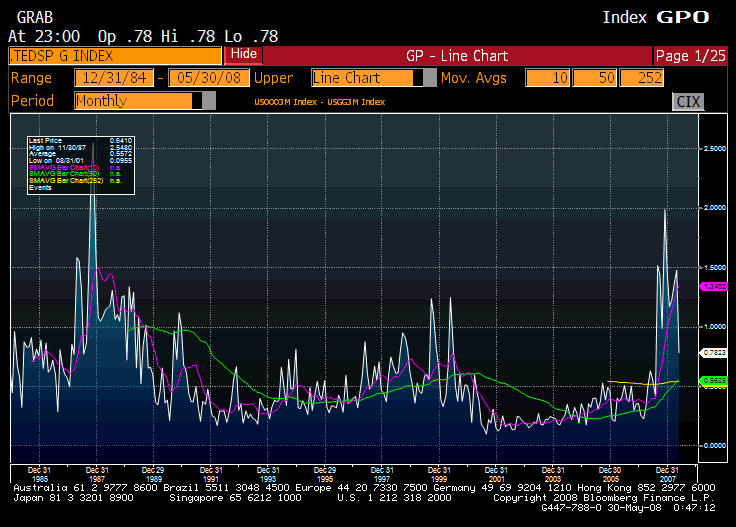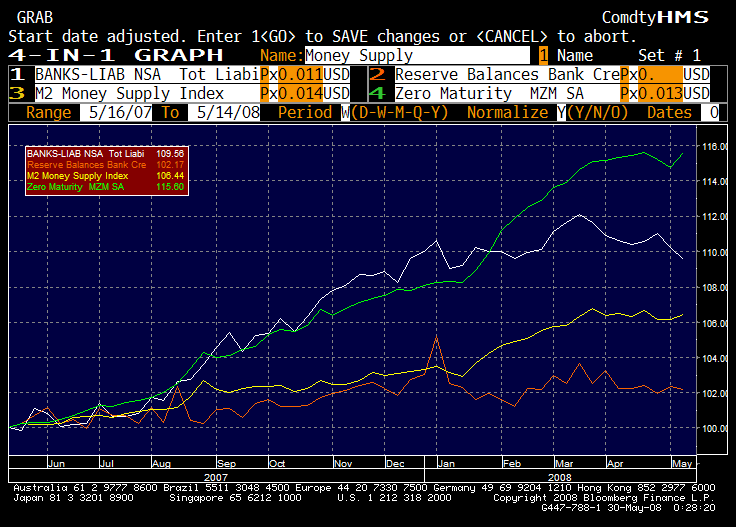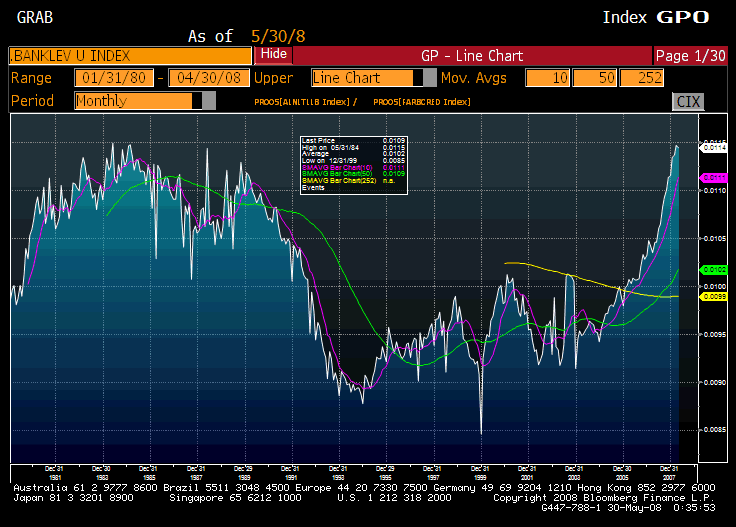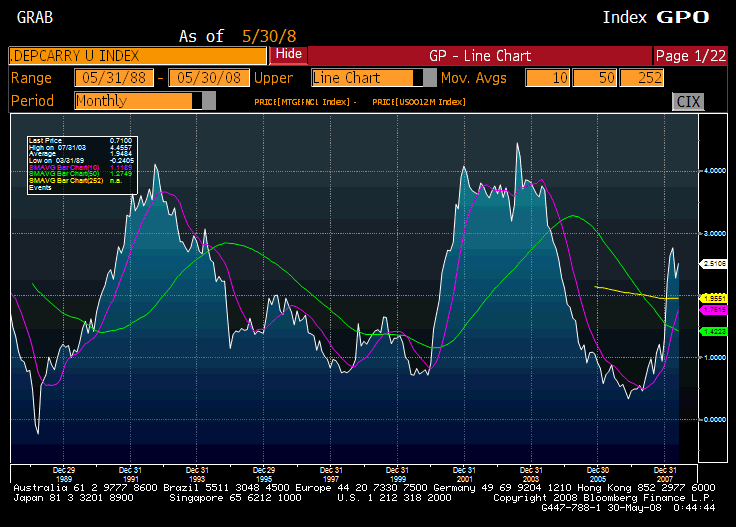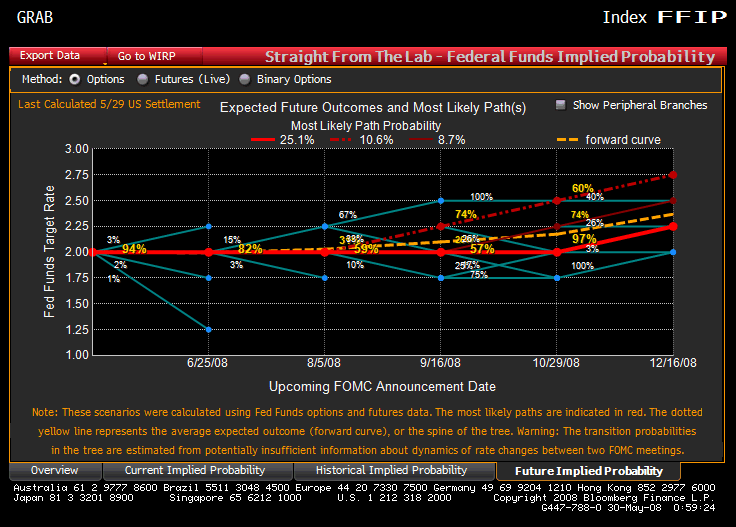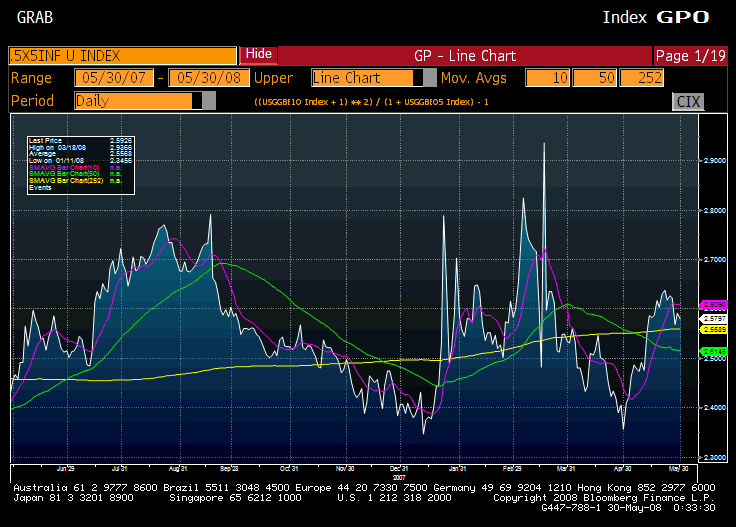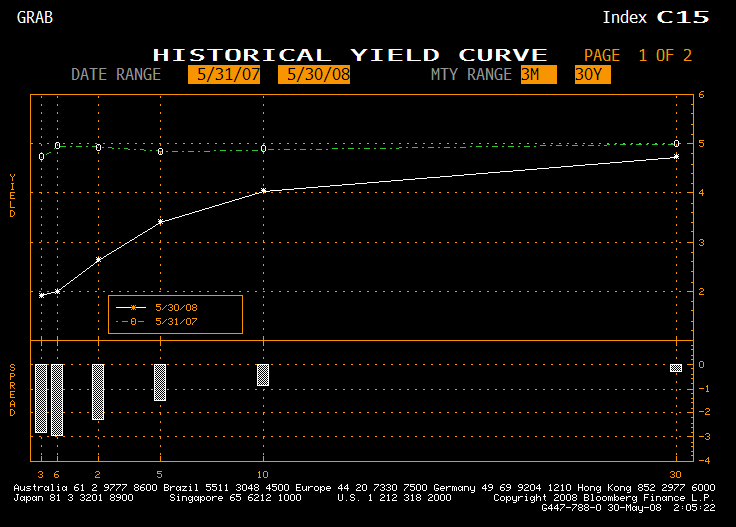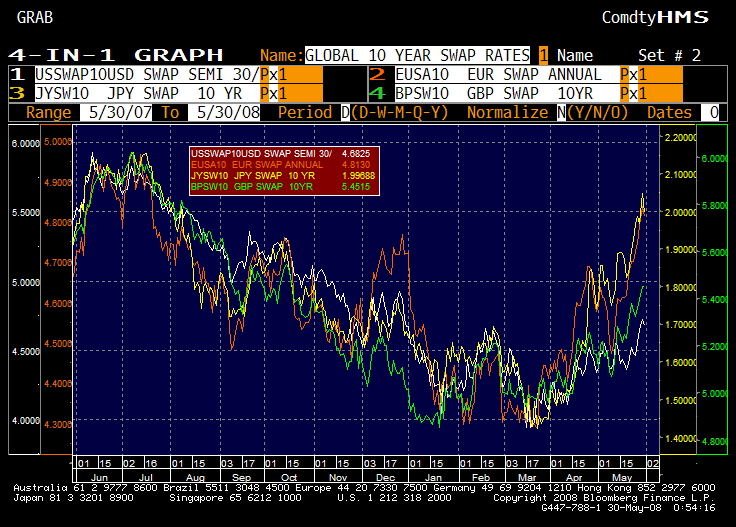Maybe there is something different about the way that neoclassical economists and historians approach things. I am a bit of a generalist, so I try to look at things from many angles. The two books that I cited in my recent book review on bubbles were written by historians, not economists. Let me cite my summary of Kindleberger’s paradigm:
- Loose monetary policy
- People chase the performance of the speculative asset
- Speculators make fixed commitments buying the speculative asset
- The speculative asset?s price gets bid up to the point where it costs money to hold the positions
- A shock hits the system, a default occurs, or monetary policy starts contracting
- The system unwinds, and the price of the speculative asset falls leading to
- Insolvencies of those that borrowed to finance the assets
- A lender of last resort appears to end the cycle
That’s not the way a neoclassical economist views the world. Either men are rational, or, their errors tend to cancel each other out in the short run. Certainly there are never destabilizing feedback loops. Errors on the part of one person don’t lead others to make the same errors.
It is said that neoclassical economics cannot explain the existence of marketing and financial markets, without relaxing their rationality assumptions significantly. As an economist trained in the neoclassical school, I think we forget that these are assumptions that are made in order to get the math to work, not the way things actually work in the world. People are influenced by other people, and they do stupid things as a result, even when there is money on the line. (Maybe, especially when there is money on the line, due to the effects of fear and greed.)
Anyway, when I wrote my last post, I figured that someone would take issue with the concept of bubbles. The commenter raises a few issues, some of which are answered in the article itself.
- What’s the definition of a bubble? When does something become a bubble?
- When did housing become a bubble? Who identified it?
Another commenter, more polite, poses these questions:
- Don’t they effectively borrow to finance the oil futures market?
- Was the internet a bubble?
- Isn’t housing unique, in that the speculators can walk away so easily?
In an attempt to answer these questions, “What’s the definition of a bubble? When does something become a bubble? Was the internet a bubble?” consider this piece from RealMoney’s Columnist Conversation:

 |
 |
David Merkel |
 |
| Bubbling Over |
1/21/05 4:38 PM ET
 |
| In light of Jim Altucher’s and Cody Willard’s pieces on bubbles, I would like to offer up my own definition of a bubble, for what it is worth.A bubble is a large increase in investment in a new industry that eventually produces a negative internal rate of return for the sector as a whole by the time the new industry hits maturity. By investment I mean the creation of new companies, and new capital-raising by established companies in a new industry.This is a hard calculation to run, with the following problems:
1) Lack of data on private transactions.
2) Lack of divisional data in corporations with multiple divisions.
3) Lack of data on the soft investment done by stakeholders who accept equity in lieu of wages, supplies, rents, etc.
4) Lack of data on corporations as they get dissolved or merged into other operations.
5) Survivorship bias.
6) Benefits to complementary industries can get blurred in a conglomerate. I.e., melding “media content” with “media delivery systems.” Assuming there is any synergy, how does it get divided?
This makes it difficult to come to an answer on “bubbles,” unless the boundaries are well-defined. With the South Sea Bubble, The Great Crash, and the Nikkei in the 90s, we can get a reasonably sharp answer — bubbles. But with industries like railroads, canals, electronics, the Internet it’s harder to come to an answer because it isn’t easy to get the data together. It is also difficult to separate out the benefits between related industries. Even if there has been a bubble, there is still likely to be profitable industries left over after the bubble has popped, but they will be smaller than what the aggregate investment in the industry would have justified.
To give a small example of this, Priceline is a profitable business. But it is worth considerably less today than all the capital that was pumped into it from the public equity markets, not even counting the private capital they employed. This would fit my bubble description well.
Personally, I lean toward the ideas embedded in Manias, Panics, and Crashes by Charles Kindleberger, and Devil take the Hindmost by Edward Chancellor. From that, I would argue that if you see a lot of capital chasing an industry at a price that makes it compelling to start businesses, there is a good probability of it being a bubble. Also, the behavior of people during speculative periods can be another clue.
It leaves me for now on the side that though the Internet boom created some valuable businesses, but in aggregate, the Internet era was a bubble. Most of the benefits seem to have gone to users of the internet, rather than the creators of the internet, which is similar to what happened with the railroads and canals. Users benefited, but builders/operators did not always benefit. |
In the internet bubble, there wasn’t that much debt, aside from vendor financing. Some faced the obligations of paying taxes on employee stock options, without having the cash to do so. Others speculated on margin, favoring the long side, of course. The real bubble was the low cost of equity capital, which led to the creation of dubious businesses, and weird stock price movements at IPOs. Say what you want about the present era, the IPO market is relatively calm, and the few deals getting done seem to have some quality.
Regarding the oil futures markets, yes, many participants are levered, but the commodity funds which are huge typically are not. Most of the selling to them comes from the oil companies, which find it profitable to lock in prices at $60, $70, $80…. $130, you get it. In that sense, I don’t think the majority of the activity is coming from levered players that are active investors — the commodity funds are passive hoarders, and the oil companies have a commercial interest.
For another example, consider the silver bubble in the late 70s / early 80s. The Hunt brothers tried to corner the silver market. In the process, the price of silver touched $54/ounce. What stopped them?
- COMEX limited their ability to hold silver futures.
- The Fed tightened monetary policy.
- Silver came from everywhere to meet demand. People sold the family silver, mines that were closed reopened, mines that were marginal began producing like the was no tomorrow.
That last point is why I think it is very hard to corner any commodity, and why bubbles don’t last. Supply overwhelms speculative demand. The speculative demand in this environment is coming from a bunch of nerds who advise pension funds. This isn’t hot money.
This brings me to the last point, regarding housing: “When did housing become a bubble? Who identified it? Isn’t housing unique, in that the speculators can walk away so easily?”
Housing became a bubble when lenders loosened underwriting standards and offered lending terms that were atrocious — what lender in his right mind would ignore equity, recourse, and amortization? Yet in a mania to earn current profits, many lenders did. The bubble started in 2003, and crested in 2005. I posted on this for four years 2003-2007. I posted at RealMoney as it was cresting, with my main article in May 2005, and several more through the remainder of the year.
There were many others who also pointed at the bubble, but as with all bubbles, the naysayers are at the fringe. It can’t be otherwise.
Regarding the ability of the housing speculators to walk away, I like Tanta’s line at Calculated Risk that there aren’t many true walk aways. Most people abandoning their former homes have tried to keep them, and have lost a lot in the process. Away from that, the lenders do screen delinquencies for likely ability to pay. If there are significant assets in a state that allows for recourse, you can bet the lawyers are active.
In closing, I think the concept of a bubble is meaningful. It is a series of two self-reinforcing cycles, one positive, and one negative. These cycles occur because market players chase past performance, suffering from greed as prices rise, and fear as they fall. Any lending to finance the speculation intensifies the size and the speed of the event.
PS — if it helps at all, my equity investing methods borrow from these ideas. I am always trying to analyze industry cycles, to make money and avoid losses. So far it has worked well.


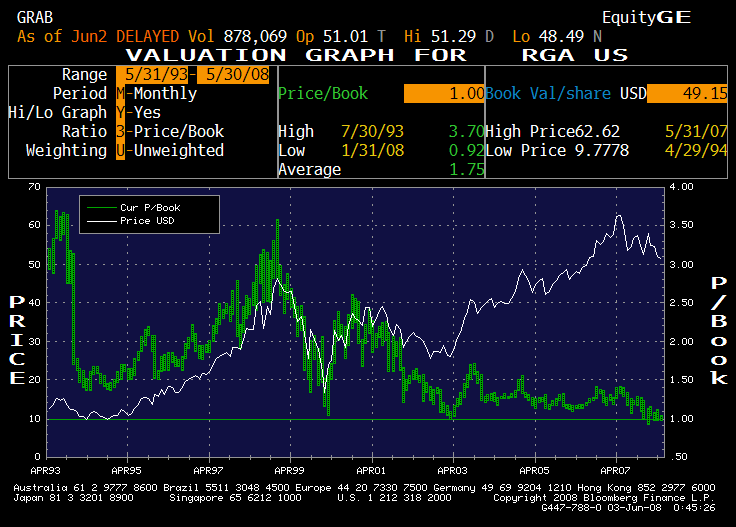

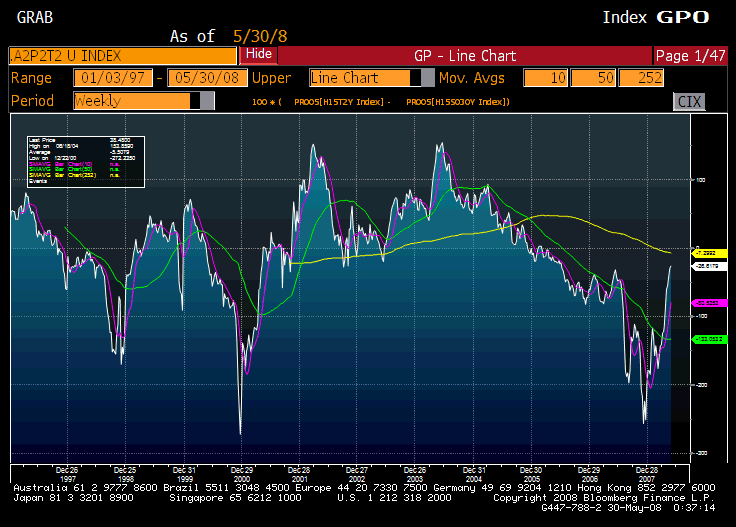 This graph shows the difference between yields on A2/P2 commercial paper and the 2-year Treasury. What this says is that a BBB company can borrow unsecured for a month at 2.7%. Not bad. Now look at the Treasury-Eurodollar [TED] spread:
This graph shows the difference between yields on A2/P2 commercial paper and the 2-year Treasury. What this says is that a BBB company can borrow unsecured for a month at 2.7%. Not bad. Now look at the Treasury-Eurodollar [TED] spread: